Planning your own trip? Prepare for your trip
Use Rough Guides' trusted partners for great rates
Plan and book your private, tailor-made tour with vetted local experts
The Minho may give the region its name, but it is the Rio Lima that sets its character. This broad valley is lined with Romanesque churches, medieval bridges, and towns that still wake under morning mists. It runs from the Atlantic at Viana do Castelo deep into the Peneda-Gerês mountains, following a route that has shaped trade, pilgrimage, and legend for centuries.
You can drive quickly along the main highway from Viana to Ponte de Lima, the valley’s standout town, famous for its riverside market. Or you can take the slower back roads that follow both banks, linking villages, vineyards, and riverside chapels. For cyclists and walkers, the Ecovia trail offers another way to follow the Lima eastwards, running along the river between Viana, Ponte de Lima, and Ponte da Barca.

Hey, I’m Sara, your Portugal travel expert. The Lima Valley is one of the most atmospheric parts of northern Portugal, shaped by its slow river, stone bridges, and historic towns. The Rio Lima runs from the Atlantic at Viana do Castelo towards the mountains of Peneda-Gerês, and following its course is one of the best ways to discover the Minho.
This Lima Valley travel guide will give you the essentials: how to get there, the best spots to stop, and where to stay the night. The valley is best enjoyed without rushing. Stroll Ponte de Lima’s arcaded square, cross the Roman bridge at twilight, or cycle a stretch of the riverside Ecovia and watch herons skim over the water.
Sara’s tip
If you’re here on a Monday, don’t miss Ponte de Lima’s market. It takes over the riverbank with stalls selling everything from smoked sausages and vinho verde to wicker baskets and livestock. It’s loud, local, and one of the best ways to feel the rhythm of the valley.
Best time to visit
Spring and autumn are ideal, with warm days, clear light, and fewer crowds. Summer is hot, especially inland, but it’s also festival season, when villages come alive with music, food, and fireworks. Winter is quieter, often misty in the mornings, but that only adds atmosphere to the river and stone towns.
How to get to the Lima Valley
The main hub is Ponte de Lima, about 30 km from Viana do Castelo and 85 km from Porto. The nearest airport is Porto. Buses run from Porto and Viana to Ponte de Lima, though they can be infrequent. Driving is the easiest option. It takes just over an hour from Porto, and having your own car makes it simple to combine riverside towns with side trips into the Peneda-Gerês mountains.
Best areas to stay in the Lima Valley
The Lima Valley runs through northern Portugal’s Minho region, from the Atlantic coast at Viana do Castelo inland to the foothills of Peneda-Gerês National Park. Its centerpiece is Ponte de Lima, about 85 km from Porto and just over an hour’s drive from the city.
If you’re looking for the best places to visit in Portugal that still feel authentic, the Lima Valley should be high on your list. Here, Roman bridges span slow rivers, Monday markets spill across the banks, and quiet trails lead you through vineyards and villages before climbing into the mountains.


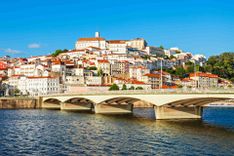
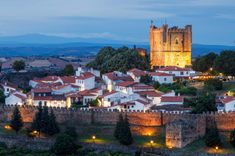

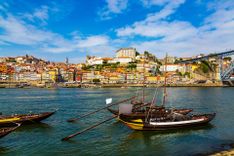










The Lima Valley is spread out, with towns, villages, and vineyards strung along the river. You’ll need some form of transport to explore beyond a single town, but once you’re in the heart of a place like Ponte de Lima, walking is the way to go.
If you’re asking how many days in the Lima Valley are enough, you can see the main highlights in a single full day: Ponte de Lima’s Roman bridge and old square, a walk or cycle along the Ecovia trail, and a stop for vinho verde and hearty Minho cooking. But if you can, stay overnight. Once the day-trippers leave, Ponte de Lima slows to a quieter rhythm, with riverside walks and lantern-lit streets that feel far more atmospheric.
If you’re planning a northern Portugal itinerary, consider giving the Lima Valley two or three days. Spend one exploring Ponte de Lima itself, another driving the back roads through villages and Romanesque churches, and a third pushing further east to Ponte da Barca or Arcos de Valdevez on the edge of Peneda-Gerês National Park. Extra nights also mean you can take the Ecovia trail at a slower pace, enjoy local markets, and linger over long meals without watching the clock.
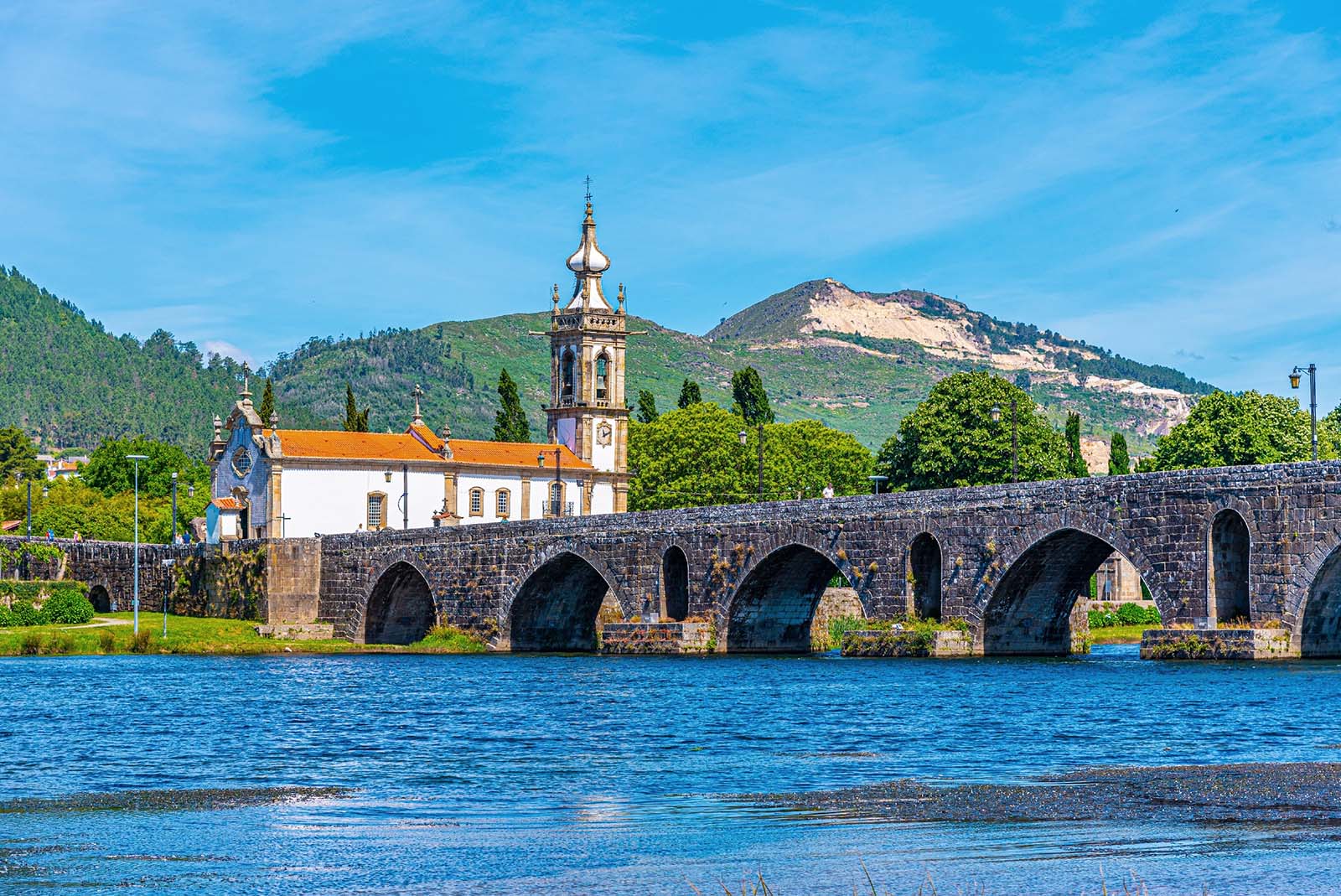
Roman bridge at Ponte de Lima in Portugal © Shutterstock
The Lima Valley has a wide choice of stays, from riverside guesthouses to rural manor houses tucked into vineyards. Here’s where to base yourself depending on how you like to travel.
The Lima Valley may not be large, but it has layers of history, culture, and scenery that reward slow travel. From Roman bridges and misty river walks to vineyard lunches and mountain day trips, here’s the list of things to do in the Lima Valley, each one worth taking your time over.
Ponte de Lima is the heart of the valley, and its Roman bridge is the symbol of the town. Stretching across the Rio Lima with a mix of Roman and medieval arches, it has carried soldiers, pilgrims, and traders for nearly 2,000 years. Legend says soldiers once refused to cross, believing the river stole memories, until a general walked across first.
Today it’s just a quiet stone span, best crossed slowly at dusk when the arches reflect in the water and swallows skim above. From the far side, you’ll have postcard views of the town’s tiled rooftops, arcades, and riverside gardens.
Held since medieval times, this market still sprawls along the riverbank every second Monday. Stalls sell everything from live chickens and wicker baskets to smoked sausages, cheese, and wine. The air is thick with the smell of roasted meats and fresh herbs.
It’s as much a social event as a shopping trip, with locals gathering to gossip and bargain. Even if you don’t buy anything, it’s one of the most vivid ways to experience Minho culture. Come early, wear comfortable shoes, and bring cash.
The Ecovia trail follows the river between Viana do Castelo, Ponte de Lima, and Ponte da Barca. Flat and well-marked, it runs past vineyards, watermills, and quiet river beaches. Walk a short section or rent a bike in Ponte de Lima for a longer ride.
Herons and kingfishers hunt along the banks, while farmers tend their vines and cornfields. In summer, pack a swimsuit; you’ll find plenty of spots to cool off in the river. Autumn brings golden leaves and quieter paths. The route isn’t demanding, but it’s one of the most rewarding ways to see the valley, and for its scenery and accessibility, it easily ranks among the best hikes in Portugal.
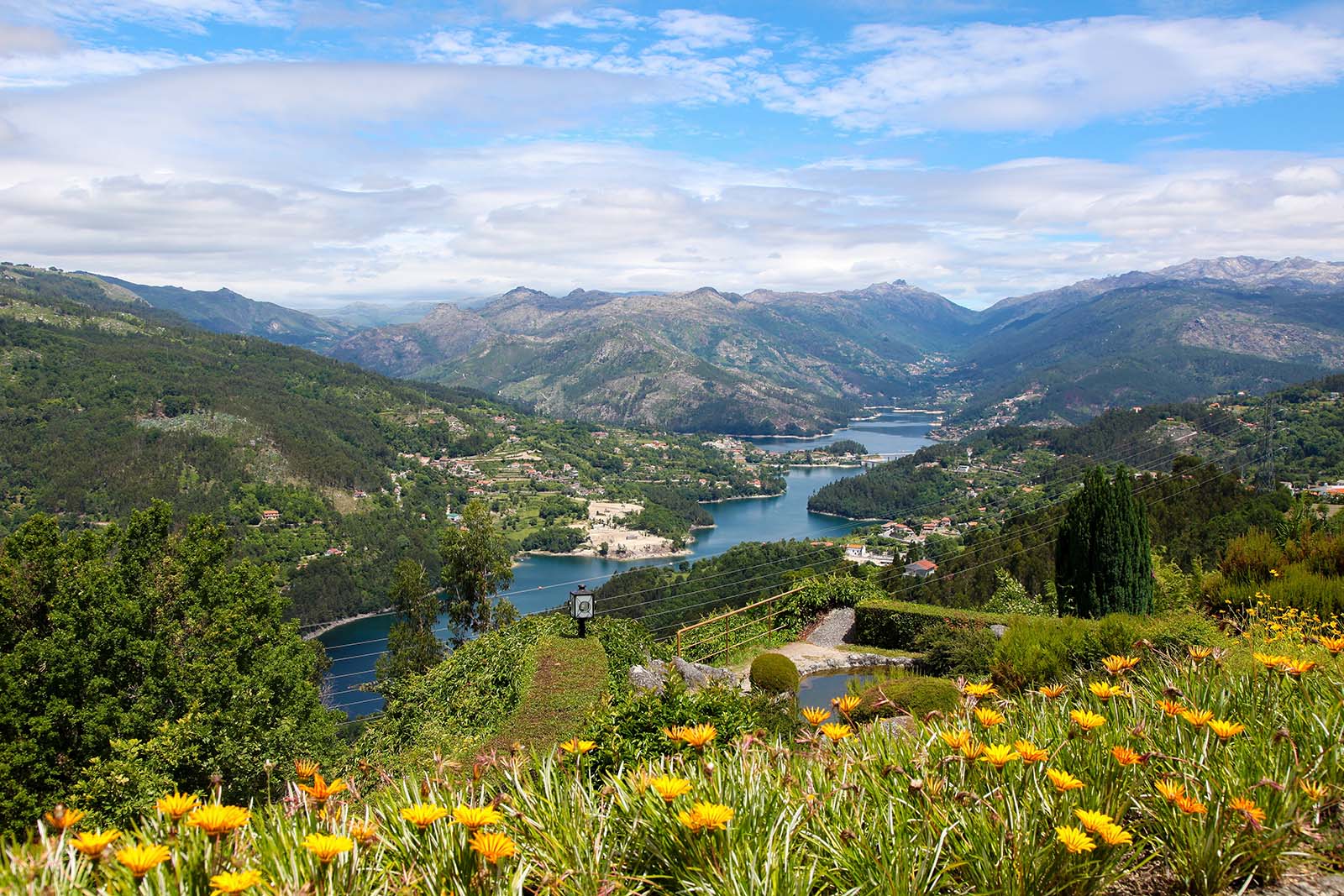
View on the Lima river meandering through Peneda Geres © Shutterstock
The Lima Valley is scattered with small Romanesque churches, many built by the Knights of St. John. Each one is simple, thick stone walls, round arches, and carved doorways, but together they tell a story of medieval devotion and rural craftsmanship.
Stop in Rubiães to see the church on the Portuguese Camino route, or in Labruja, where moss creeps across the stones. These are working parish churches, so go quietly and respectfully.
The Minho is the home of vinho verde, the light, slightly sparkling wine that’s perfect for hot days. In the Lima Valley, many small producers open their doors for tastings. Some are rustic farmhouses, others elegant estates with manicured gardens.
You’ll usually try whites made from Loureiro grapes, crisp and citrusy, often served with local cheeses or cured meats. Book ahead, as many producers are small family operations. Tasting vinho verde right by the river where it’s grown is an experience that sticks with you.
At the mouth of the Lima, Viana do Castelo is a lively port city with tiled mansions, narrow lanes, and seafood restaurants. The centerpiece is the Praça da República, lined with arcades and fountains.
Take the funicular up to the hilltop basilica of Santa Luzia for sweeping views of the river meeting the Atlantic. Then head down to the docks for fresh codfish, once the city’s economic lifeblood. Viana mixes coastal bustle with Lima Valley charm, making it a natural start or end point.
Summer in the Lima Valley means festivals. Ponte de Lima hosts the Feiras Novas in September, with fireworks, processions, and music lasting late into the night. Viana’s Romaria da Senhora d’Agonia is even bigger, filling the streets with traditional costumes and flower carpets.
Festivals here are noisy, crowded, and deeply rooted in local tradition. Expect marching bands, food stalls, and vinho verde flowing freely. Book accommodation well ahead if you’re visiting during festival season.
Further east along the valley, Arcos de Valdevez is a smaller town with a beautiful riverside promenade and baroque churches. The stone bridge over the Vez River is a favorite sunset spot, and the surrounding countryside is filled with easy walking trails.
It’s also a gateway to Peneda-Gerês National Park. Base yourself here if you want to combine lazy riverside afternoons with mountain day hikes.
The Lima Valley runs straight into Peneda-Gerês, Portugal’s only national park. Trails climb through oak forests, granite villages, and waterfalls where you can swim in summer. Horses graze freely on the high plateaus, and stone espigueiros (granaries) dot the landscape.
It’s an easy add-on to a Lima Valley trip, with hikes ranging from gentle valley walks to demanding full-day treks. Come in spring for wildflowers, or autumn for misty, atmospheric forests.
Away from Ponte de Lima, the valley is full of quiet villages where time runs differently. Houses are built of rough granite, women still tend vegetable gardens, and cafés serve little more than coffee, cake, and gossip.
Stop in Ponte da Barca for its riverside square, or wander Labruja with its Romanesque church. The joy here is in slowing down: listen to the church bells, buy fresh bread, and let the valley reveal itself in small details.
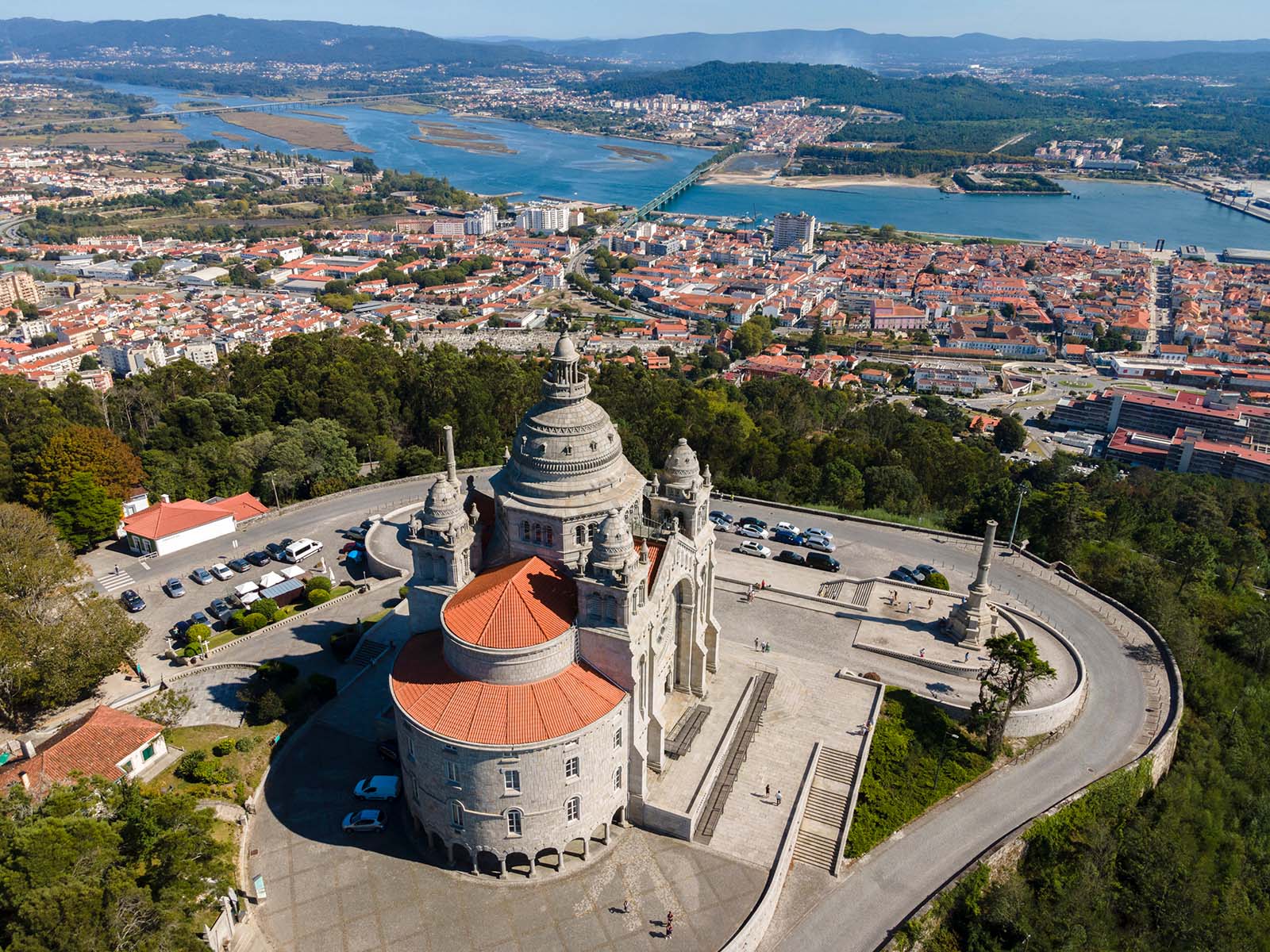
Church of Santa Luzia in Viana do Castelo, Portugal © Shutterstock
The Lima Valley has an Atlantic-influenced climate, meaning mild, rainy winters and warm summers with plenty of sunshine. Morning mists are common along the river, especially in spring and autumn, adding to the valley’s atmosphere. Average temperatures range from 46°F (8°C) in January to 81°F (27°C) in August, though heatwaves can push it higher inland, and evenings stay cooler near the water. For current forecasts, check IPMA (Portuguese Institute for Sea and Atmosphere).

A small waterfall and green lagoon hidden in the mountains. Arado river, Peneda-Geres National Park, Portugal © Shutterstock
The Lima Valley is in the heart of the Minho, and its food is as rich as the landscape. Expect hearty stews, grilled meats, and endless varieties of vinho verde. Meals are long, portions are generous, and many restaurants sit right by the river, where you can eat outdoors in summer. This is a place where food is part of the travel experience, and stopping for a meal is as important as crossing a bridge or walking a trail.
Here are some unique experiences we can arrange for your tailor-made Lima Valley trip: all private, flexible, and designed by our local travel experts.
Discover Portugal's most captivating stories
Use Rough Guides' trusted partners for great rates
written by
Olga Sitnitsa
Online editor at Rough Guides, specialising in travel content. Passionate about creating compelling stories and inspiring others to explore the world.